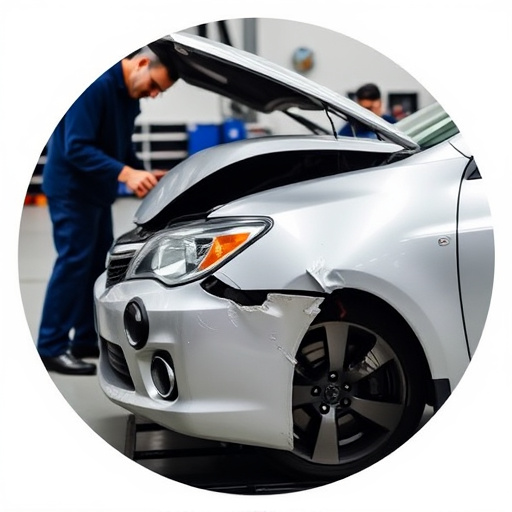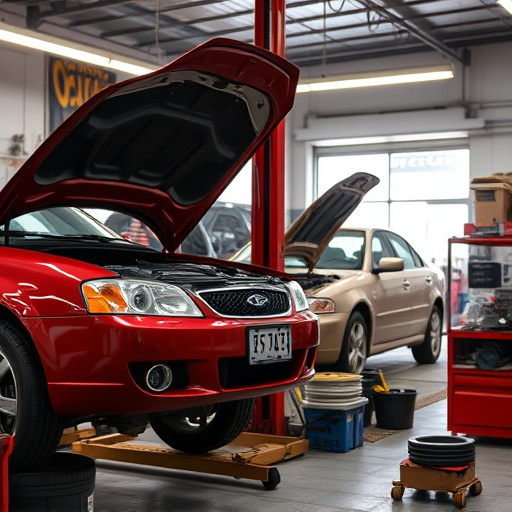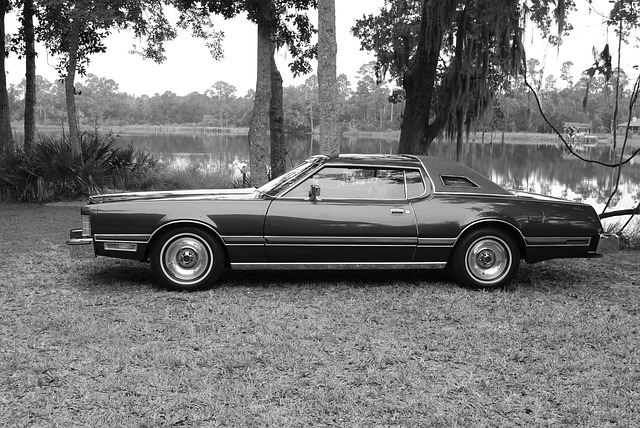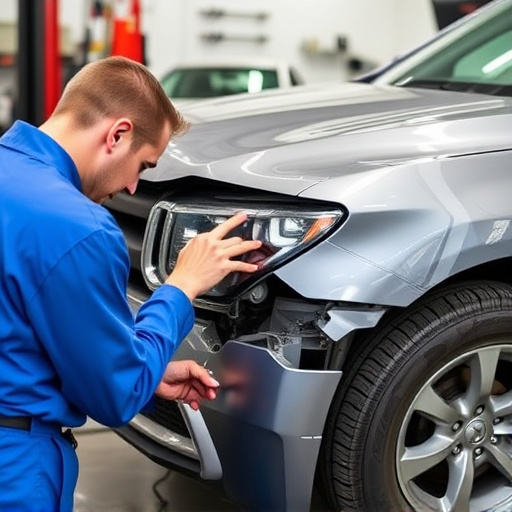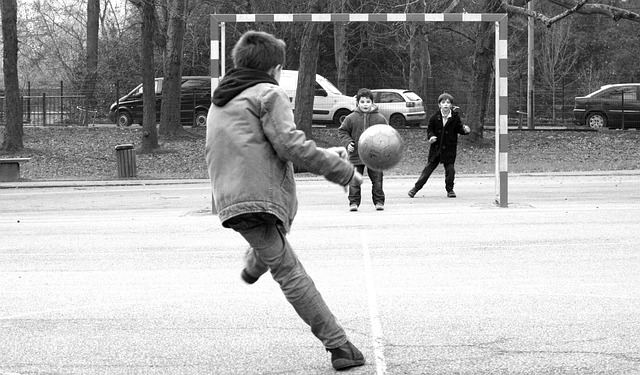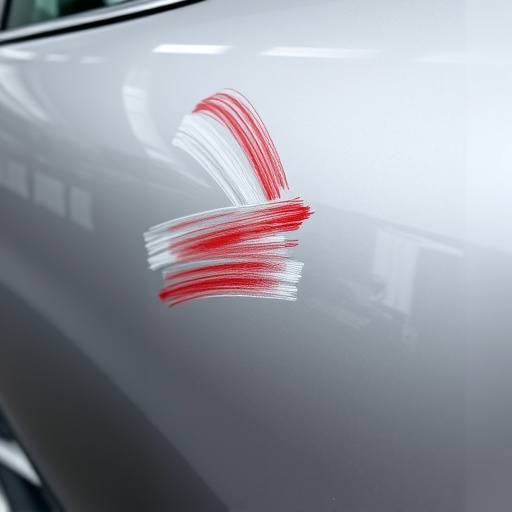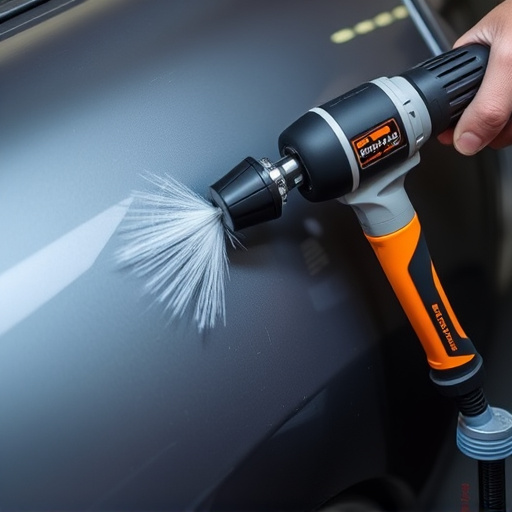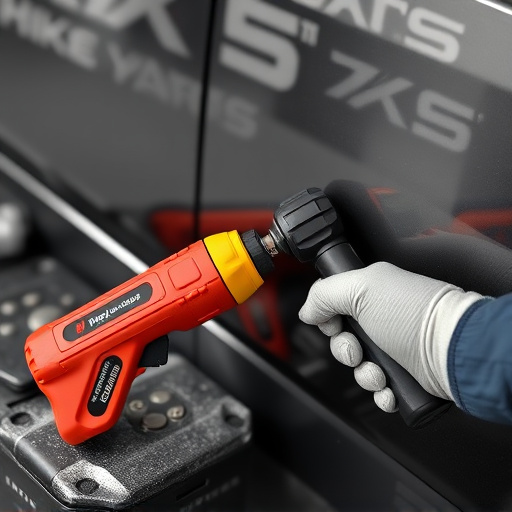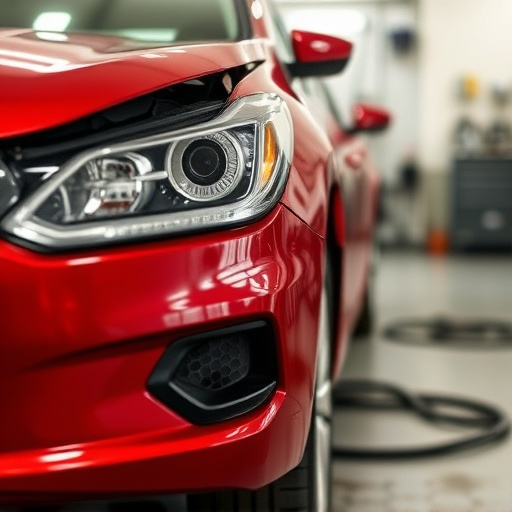Mercedes Lane Assist Recalibration is essential for maintaining the effectiveness of ADAS (Advanced Driver Assistance Systems) and radar functions in Mercedes vehicles, ensuring safe driving experiences. Regular recalibration adjusts sensor calibration for optimal performance, addressing environmental impacts and wear over time. This meticulous process involves thorough inspection, repairs/replacements, advanced diagnostics, and verification testing to fine-tune sensors, cameras, and radars, ultimately enhancing vehicle safety and reliability. Professional shops perform this critical service to keep Mercedes' ADAS systems accurate and responsive in various driving conditions.
Mercedes Lane Assist Recalibration: Enhancing ADAS and Radar Performance
Staying ahead in autonomous driving, Mercedes introduces Lane Assist Recalibration—a technical marvel. This process optimizes Advanced Driver Assistance Systems (ADAS) and radar functions, ensuring precision and reliability. By recalibrating the system, vehicles can better navigate lanes, detect obstacles, and provide smoother drives.
Dive into our comprehensive guide to explore the benefits, technical aspects, and step-by-step procedures for Mercedes Lane Assist Recalibration.
- Understanding Mercedes Lane Assist Recalibration: A Technical Deep Dive
- Why Recalibrate: Benefits for Advanced Driver Assistance Systems (ADAS) and Radar Functions
- The Process: Step-by-Step Guide to Effective Lane Assist Recalibration
Understanding Mercedes Lane Assist Recalibration: A Technical Deep Dive

Mercedes Lane Assist Recalibration is a specialized process that plays a pivotal role in maintaining the Advanced Driver Assistance Systems (ADAS) and radar functions within Mercedes vehicles. This technical procedure involves precise adjustments to the vehicle’s sensor calibration, ensuring optimal performance of safety features designed to keep drivers centered in their lane. By recalibrating these systems, mechanics at a trusted vehicle body shop or car bodywork services provider can address issues related to lane departure warnings, active lane keeping, and adaptive cruise control, among others.
During this deep dive into Mercedes lane assist recalibration, the process starts with thorough inspection of the vehicle’s sensors, cameras, and radar modules. Any discrepancies or damage are meticulously identified, and repairs or replacements are carried out as required. Advanced diagnostic tools are employed to verify that each component is functioning within specified parameters before proceeding with the recalibration. This meticulous approach guarantees that when a car undergoes collision repair at a professional shop, its ADAS and radar capabilities are not just restored but enhanced, contributing to a safer driving experience for all.
Why Recalibrate: Benefits for Advanced Driver Assistance Systems (ADAS) and Radar Functions

Recalibrating Mercedes lane assist systems is essential for maintaining optimal performance and reliability of Advanced Driver Assistance Systems (ADAS) and radar functions. Over time, various factors such as environmental changes, wear and tear, and even minor accidents can impact the accuracy and effectiveness of these safety features. A precise recalibration ensures that the system accurately detects road markings, other vehicles, and obstacles, enabling smoother and safer driving experiences.
This process is particularly vital for car body shops and auto bodywork professionals who deal with vehicle repairs and modifications. Accurate lane assist recalibration helps in fine-tuning sensors, cameras, and radars, ensuring they work in harmony to provide drivers with the best possible assistance. This not only enhances safety but also reinforces the reputation of auto body painting and repair services as indispensable contributors to modern vehicles’ overall performance and reliability.
The Process: Step-by-Step Guide to Effective Lane Assist Recalibration

The process of Mercedes lane assist recalibration is a meticulous task designed to ensure the Advanced Driver Assistance Systems (ADAS) and radar functions operate at peak performance. It involves several key steps, beginning with vehicle preparation where all relevant sensors are identified and secured for precise adjustments. Next, specialized tools are used to access the car’s computer system, allowing technicians to calibrate each sensor individually against a known standard. This meticulous process simulates real-world driving conditions, ensuring the lane assist system accurately perceives road markings and surrounding vehicles.
Following calibration, extensive testing is conducted on both static and dynamic surfaces to verify the system’s responsiveness and accuracy. This includes checking for any anomalies or deviations from expected performance, which could be indicative of issues with sensor alignment or other components. Once the system passes all tests, the vehicle undergoes a final inspection, verifying that all repairs or adjustments have been correctly implemented. This meticulous approach ensures not only optimal ADAS and radar functionality but also enhances overall vehicle safety and reliability through proper car paint repair and vehicle restoration techniques if any touch-ups are required.
Mercedes lane assist recalibration plays a pivotal role in maintaining optimal performance of Advanced Driver Assistance Systems (ADAS) and radar functions. By regularly calibrating these systems, vehicle owners can ensure enhanced safety, improved accuracy, and extended lifespan of their ADAS components. This comprehensive guide has provided a technical deep dive into the process, highlighting the benefits of recalibration and offering a step-by-step approach to ensure effective results. Embracing this practice is crucial for folks navigating the world of modern vehicle technology, fostering a safer and more efficient driving experience.
